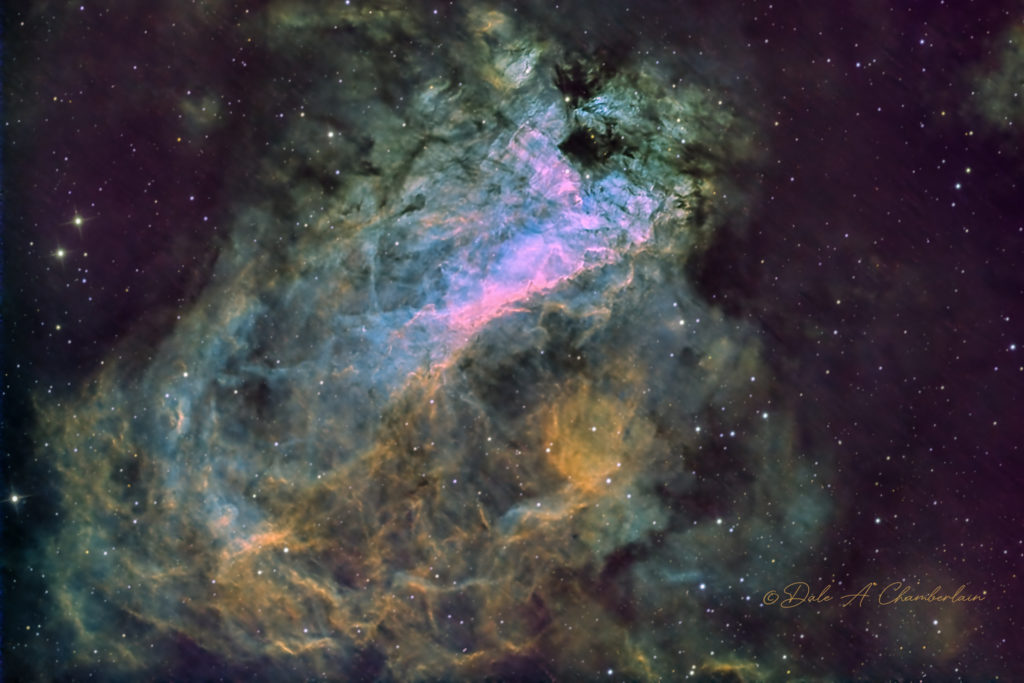
Object:The Omega Nebula, also known as the Swan Nebula, Checkmark Nebula, and the Horseshoe Nebula (catalogued as Messier 17 or M17 or NGC 6618) is an H II region in the constellation Sagittarius. It was discovered by Philippe Loys de Chéseaux in 1745. Charles Messier catalogued it in 1764. It is in the rich starfields of the Sagittarius area of the Milky Way.
The Omega Nebula is between 5,000 and 6,000 light-years from Earth and it spans some 15 light-years in diameter. The cloud of interstellar matter of which this nebula is a part is roughly 40 light-years in diameter and has a mass of 30,000 solar masses. The total mass of the Omega Nebula is an estimated 800 solar masses.
It is considered one of the brightest and most massive star-forming regions of our galaxy. Its local geometry is like the Orion Nebula except that it is viewed edge-on rather than face-on.
The open cluster NGC 6618 lies embedded in the nebulosity and causes the gases of the nebula to shine due to radiation from these hot, young stars; however, the actual number of stars in the nebula is much higher – up to 800, plus over a thousand stars in formation on its outer regions. It is also one of the youngest clusters known, with an age of just 1 million years.
The Swan portion of M17, the Omega Nebula in the Sagittarius nebulosity is said to resemble a barber’s pole.
Taken: August 3, 2019
Telescope: Astro-Tech 14” RC with 0.65x focal reducer
Mount: Paramount ME II unguided
Camera: ZWO ASI1600MM-Pro (cooled to -15C; unity gain) Bin 2×2.
Focuser: Moonlite Nitecrawler
Filters used: H-a, O-III and S-II on a ZWO 8 position filter wheel
Exposures: 25×90 sec each filters, for a total exposure time of 1.875 hours; calibrated with 30 dark frames, 32 flat frames with 32 dark-flats. Image was processed in the Hubble (SHO) palette.
Seeing Conditions:
Processed with PixInsight and Photoshop CC 2019